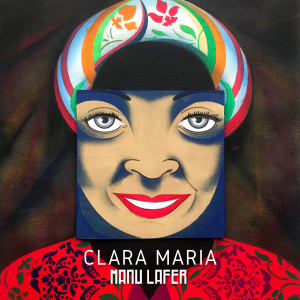
“Clara Maria” is a composition that it’s author and interpreter, Manu Lafer, keeps recording and recreating. The piece was inspired by unfinished songs, such as “Querida”, by Tom Jobim, and testimonial songs, such as “Sargaço Mar”, by Dorival Caymmi.
Producer and programmer Alê Siqueira’s sophisticated arrangement for the Brazilian rhythm ijexá (ritualistically known as afoxé) proposes an unusual quintuple meter – unusual, because it only occurs in this way in this composition, with this inventive guitar, arranged by Manu Lafer and played by Swami Jr. What allows for this refinement is Marcelo Galter’s piano and Gabi Guedes’ atabaques.
The sophisticated and poetic lyrics is based on the characters’ wild and spiritual drives. “Clara Maria” talks about an “adjective-woman”, not two “object-women”, as the careless listener would guess. The song, thus, is about one, not two women. This woman is both “clara” and “maria” – first names serving as adjectives.
The passion presented in the song is inspired by the Brazilian tradition set by writer Nelson Rodrigues. In “Clara Maria”, however, the situation isn’t negative nor pathological; what we can still see is the discovery of the relationship between a man and a woman, in its physical and spiritual aspects at once.
Remarkable songs like “Take Five” and “Chovendo na Roseira” show us that there is more than way of counting to 5. In “Clara Maria”, it is a prosody that alternates counting 3 beats and counting 2 beats, producing a sense of incompletion in the universe of a romantic and passionate relationship.
This time signature mirrors writer Yael Ziegler’s understanding of the biblical Book of Lamentations (Eicha). The biblical parallelism with catholic background makes it possible to put together qualities and features that would, in other contexts, be separate, opposed, or contradictory.







